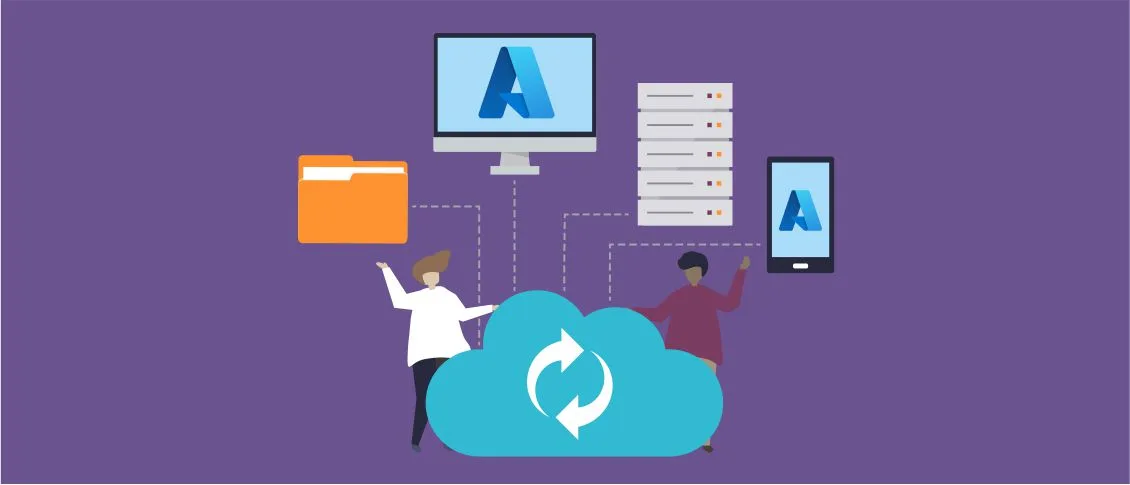Overview
If you are considering a variant of migration of your software to the cloud, you’ve probably heard about such an option as Azure migration. But what does Azure represent itself and what opportunities can it offer? Let’s examine this topic together.
What is Microsoft Azure?
Azure is a cloud platform provided by Microsoft.
It offers a continuously expanding set of cloud services that allow you to build, deploy, test and manage applications. All this is possible thanks to the distributed data centers operated by Microsoft.
MS Azure provides:
- software as a service (SaaS),
- platform as a service (PaaS),
- infrastructure as a service (IaaS).
What is very peculiar about it is that Azure can ensure support not only of Microsoft specific tools, frameworks and programming languages but also those developed by third-party providers.
This flexibility and a wide range of opportunities are highly appreciated by businesses working in many industries which makes MS Azure practically a universal solution. However, as well as any other solution, it has its pros and cons.
Pros and cons of Microsoft Azure
The Azure platform is widely praised for being:
- open (as we’ve already mentioned it offers support for practically all tools, frameworks and languages);
- easily scalable and fully flexible (you always have a possibility to start using more resources or, vice versa, scale the used resources down);
- reliable (the platform has very strong tech support available 24/7);
- cost-efficient (you should pay only for those resources that you really use);
- absolutely secure (Microsoft ensures multiple security layers).
But what are the disadvantages of Azure? And are they compensated with its advantages? (Spoiler: yes, 90% of Fortune 500 companies that have chosen Azure can’t be wrong)
- Azure requires being managed. Though you do not need to maintain any hardware locally to store your data, your cloud data storage should be managed as it isn’t done from the side of Microsoft Azure. And we must admit that efficient data management on Azure requires some special skills and knowledge.
- Azure offers you a single vendor strategy. It means that using Microsoft, the most feasible variant for you will be to work only with this company as your cloud provider.
- It may be rather problematic (or it’s better today expensive) to take your software out. However, for placing your apps on the cloud Azure offers very affordable prices.
Microsoft Azure is definitely a strong player in the cloud services market where it competes with AWS and Google Cloud. Though MS Azure covers more than 2 times more regions than Google Cloud, it doesn’t have such a wide coverage as AWS.
The same situation is with the number of services. With 100+ services available, Azure is in the middle of this list.
However, from the perspective of the integration with open-source and on-premise systems (such as MS tools), Azure is an obvious winner.
Azure migration strategies
When it comes to migration to cloud, there are several strategies that can be applicable to Azure.
- Rehost. It is the quickest variant of migration from your data center to Azure, in this case, all applications are migrated as they are without any changes in their code. This strategy can be used for migrating apps that are built to utilize Azure architecture.
- Refactor. This strategy presupposes some design updates but the code of apps is not changed. Such Azure products as Azure SQL Database Managed Instance, Azure App Service and containers are of great use.
- Rearchitect. In this case, our apps should be modified to let you enjoy such benefits of Azure architecture as scalability and resilience. It’s a good way to introduce Azure capabilities to your apps.
- Rebuild. This strategy is the most comprehensive one. According to it, your apps should be rebuilt from scratch with the help of cloud-native technologies.
Many clients are interested in whether it is possible to migrate desktop applications to the cloud. Yes, it is possible, however, it requires some time and efforts.
The first option is reengineering, in other words, rewriting the code to make your app a web one. However, it is not always efficient.
But there is also the second variant.
Microsoft offers a comprehensive desktop and app virtualization service called Windows Virtual Desktop. It allows us to deploy Windows desktops on Azure just within minutes.
Which strategy can be applied in your case? After the analysis of your software and your business requirements, we will find a good solution for you.










